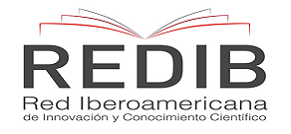Effect of CrossFit exercises on the prevention of lower extremity injuries and the improvement of physical and biochemical variables in soccer players
Keywords:
CrossFit, Prevention, Lower Extremity Injuries, Soccer PlayersAbstract
Objectives: To prepare CrossFit exercises for the prevention of lower extremity injuries for soccer players and identify the effect of CrossFit exercises on some physical and biochemical variables for soccer players.
Methods: The experimental method in one group style (pre-post) was used. The sample was selected from 20 football players in the youth category at Sulaikh Sports Club, ages ranging from 18 to 22 years old, for the sports season 2021-2022. CrossFit exercises were applied to them for a period of 8 weeks, at the rate of 5 units per week, and after completion, raw data was obtained through pre- and post-tests.
Findings: Significant differences were observed between the pre- and post-tests in physical variables (explosive power, strength characterized by speed, speed, muscular endurance, and efficiency of the circulatory and respiratory systems), with results favoring the post-test (p<0.05). Significant differences were also found between the pre- and post-tests for white blood cells and hemoglobin, favoring the post-test (p<0.05). Additionally, significant differences were noted between the pre- and post-tests for LDH and CPK enzymes, with the post-test showing better results (p<0.05).
Conclusions: CrossFit exercises can be a useful tool to improve explosive power, strength characterized by speed, speed, muscular endurance, and the efficiency of the circulatory and respiratory systems. Furthermore, CrossFit exercises have a positive effect on white blood cells and hemoglobin, and on LDH and CPK enzymes.
Downloads
References
Abbas, H. H. (2001). The effect of physical effort with different energy systems on some biochemical variables and salts in the blood [Master's thesis, College of Physical Education, University of Babylon].
Al-Budairy, Q. H. K. (2006). The effect of using the fixed and variable exercise method in learning the handling skill and transferring its effect to the shooting skill of the junior handball players [Master's thesis, College of Physical Education, University of Babylon].
Ali al-Zubaidi, A. R. K. (1999). The effect of a proposed curriculum for special muscular strength in developing the performance of some special requirements skills on the mat of floor movements [Doctoral dissertation, College of Physical Education, University of Baghdad].
Allawi, M. H., & Radwan, M. N. A. (1999). Skill and psychological tests in the sports field (1st ed.). Dar Al-Fikr Al-Arabi.
Allawi, M. H., & Radwan, M. N. A. (2001). Motor performance tests. Dar Al-Fikr Al-Arabi.
Astrand, P.-O., & Rodahl, K. (1977). Textbook of work physiology (2nd ed.). McGraw-Hill.
Faleh, A. H. (2009). The effect of two training curricula with high-intensity interval and hypoxic on the development of some physical attributes, basic skills, biochemical and functional variables for young soccer players [PhD thesis, College of Physical Education, University of Basra].
Fisher, J., Sales, A., Carlson, L., & Steele, J. (2017). A comparison of the motivational factors between CrossFit participants and other resistance exercise modalities: a pilot study. The Journal of Sports Medicine and Physical Fitness, 57(9), 1227–1234. https://doi.org/10.23736/S0022-4707.16.06434-3
Jassim, A. M. (2021). The effect of deep inner sense exercises on some motor abilities of deception skill to prevent some knee injuries for young handball players [PhD thesis, Al-Mustansiriya University, College of Physical Education and Sports Sciences].
Khater, A. M., & Al-Beik, A. F. (1996). Measurement in the mathematical field (4th ed.). Dar Al-Kitab Al-Hadith.
Majeed, R. K. (1991). Biochemical and physiological analysis in sports training. Dar Al-Hikma Press.
Majeed, R. K. (1997). Applications in the physiology of sports training (1st ed.). Dar Al-Shorouk for Publishing and Distribution.
Naji, Q., & Bastawisi, A. (1987). Tests and principles of statistics in the mathematical field (1st ed.). Higher Education Press.
Salama, B. E. I. (1988). Physiology of sports. Dar Al-Fikr Al-Arabi.
Smith, M. M., Sommer, A. J., Starkoff, B. E., & Devor, S. T. (2013). Crossfit-based high-intensity power training improves maximal aerobic fitness and body composition. Journal of Strength and Conditioning Research, 27(11), 3159–3172. https://doi.org/10.1519/JSC.0b013e318289e59f
Downloads
Published
How to Cite
Issue
Section
License
Copyright and Licensing
For all articles published in Atena Journals, copyright is retained by the authors. Articles are licensed under an open access Creative Commons CC BY 4.0 license, meaning that anyone may download and read the paper for free. In addition, the article may be reused and quoted provided that the original published version is cited. These conditions allow for maximum use and exposure of the work, while ensuring that the authors receive proper credit.
Reproducing Published Material from other Publishers
It is absolutely essential that authors obtain permission to reproduce any published material (figures, schemes, tables or any extract of a text) which does not fall into the public domain, or for which they do not hold the copyright. Permission should be requested by the authors from the copyrightholder (usually the Publisher, please refer to the imprint of the individual publications to identify the copyrightholder).
Permission is required for:
- Your own works published by other Publishers and for which you did not retain copyright.
- Substantial extracts from anyones' works or a series of works.
- Use of Tables, Graphs, Charts, Schemes and Artworks if they are unaltered or slightly modified.
- Photographs for which you do not hold copyright.
Permission is not required for:
- Reconstruction of your own table with data already published elsewhere. Please notice that in this case you must cite the source of the data in the form of either "Data from..." or "Adapted from...".
- Reasonably short quotes are considered fair use and therefore do not require permission.
- Graphs, Charts, Schemes and Artworks that are completely redrawn by the authors and significantly changed beyond recognition do not require permission.
Obtaining Permission
In order to avoid unnecessary delays in the publication process, you should start obtaining permissions as early as possible. If in any doubt about the copyright, apply for permission. Atena Journals cannot publish material from other publications without permission.
The copyright holder may give you instructions on the form of acknowledgement to be followed; otherwise follow the style: "Reproduced with permission from [author], [book/journal title]; published by [publisher], [year].' at the end of the caption of the Table, Figure or Scheme.














